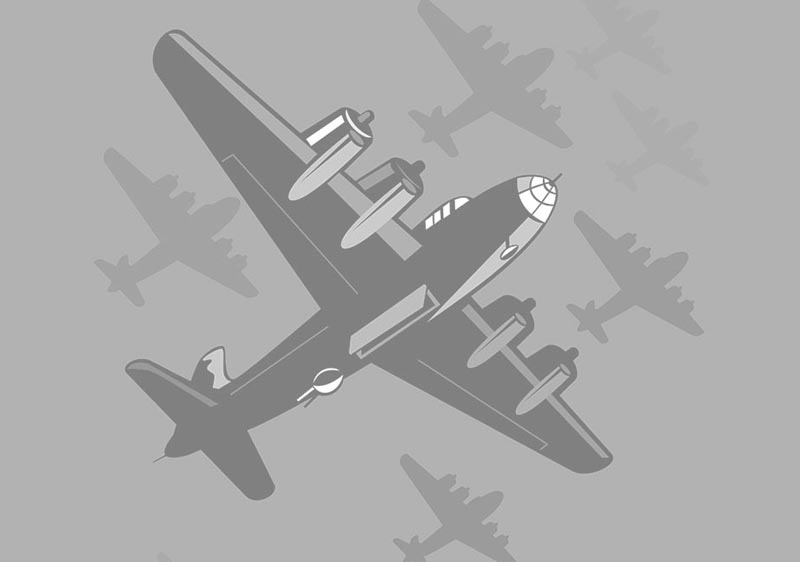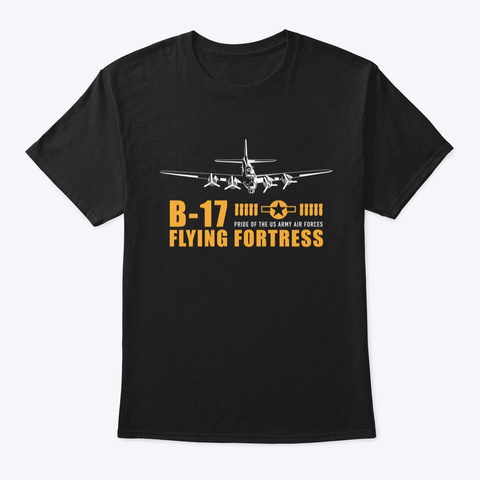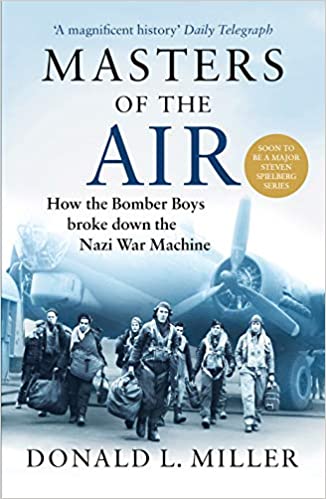
Produktionsblock:
B-17G-40-BO: 42-97058 bis 42-97172
Hersteller:
Boeing
- Bomber-Gruppe:
- 94th Bomb Group
- Bomber-Staffel:
- 333rd Bomb Squadron
- 410th Bomb Squadron
- RCL: TS-E, GL-X
MACR: 8841
Geschichte der
B-17 42-97153 / Darling Doris aka Daring Doris
Delivered Cheyenne 3/2/44; Gr Island 7/2/44; Kearney 24/2/44; Assigned: 333BS/94BG [TS-E] Rougham 3/3/44 DARLING DORIS; 410BS [GL-X], 331BS; battle damage Bohlen 11/9/44 Pilot: Chas Duda, Norman Tipton, Dick Bishop, John Caro, Ed Moore, Joe Cunneen, Walt Howard, Tom Kulak, Tom Mazurkiewicz (9KIA); mid air coll w/42-31653 (94BG), and broke in half at ball turret, crashed Audigast, Germany. MACR 8841. DARING DORIS.
Zuletzt aktualisiert: 6. Juni 2020
B-17 42-97153 / Darling Doris aka Daring Doris Details
Kollision in der Luft mit der B-17 #42-31653 am 11. September 1944.
Bemerkungen oder Aussagen von Augenzeugen:
Dieses Flugzeug wurde im Zielgebiet unmittelbar nach dem Abwurf der Bomben vom Flugzeug #653, einem anderen Flugzeug der gleichen Gruppe, getroffen. Das Flugzeug wurde in der Mitte des getroffen und zerbrach in zwei Teile. Vier (4) Fallschirme wurden beobachtet, aber es ist nicht bekannt, aus welchem Flugzeug sie kamen.
Von der belgischen Küste aus wurde ein beträchtlicher Vortrieb in das Zielgebiet eingeleitet. Eine andere Gruppe von B-17-Flugzeugen lief auf Kollisionskurs zu unserer Gruppe, während sie auf dem Bombenflug war. Die hohe Gruppe des Geschwaders, die auf Kollisionskurs lief, flog direkt durch unsere Formation. Diese Vorfälle hatten wahrscheinlich eine ermüdende und anstrengende Wirkung auf alle Piloten und können als eine mittragende Ursache der Kollision angesehen werden.
B-17 42-97153 / Darling Doris aka Daring Doris Crew
| Position | Rang | Name | Status | Bemerkung |
|---|---|---|---|---|
| P | 2LT | Charles V. Duda | KIA | - |
| CP | 2LT | Norman J. Tiptor | KIA | - |
| NAV | 2LT | Richard N. Bishop | KIA | - |
| BOMB | SGT | John Caro | KIA | - |
| ENG/TT | S/SGT | Edward R. Moore | KIA | - |
| RO | S/SGT | Joseph P. Cunneen | KIA | - |
| BT | S/SGT | Walter N. Howard | KIA | - |
| WG | S/SGT | Thomas J. Kulak | KIA | - |
| TG | S/SGT | Thomas Mazurkiewicz | KIA | - |






12. Januar 2019 access_time 23:09
Hello,
My grandfather was on the other plane that collided witht his crew. I would love to exchange any information if possible. Thank you.
20. Februar 2020 access_time 5:35
My grandfather was not on the final flight but was ball gunner for 14 previous missions on DD
30. November 2020 access_time 16:54
Charles, what was his name? Do you have any info on his crew? jusbur13@hotmail.com
10. Februar 2021 access_time 17:04
Hey Charles. Would you happen to know who named the plane „Daring Doris“ or if it was already named prior to your grandfathers arrival? Any pictures? Thanks.
18. Januar 2019 access_time 22:46
Does anyone have pictures on this aircraft/crew?
07. August 2019 access_time 17:40
My uncle was the pilot of Daring Doris
06. Mai 2020 access_time 21:37
my great uncle was Richard Bishop and he was the navigator on the Daring Doris
30. November 2020 access_time 16:53
Craig can you please email me? jusbur13@hotmail.com
25. Februar 2024 access_time 5:07
My grandson’s great-grandad on his dad’s side was the tail- gunner on 25-passes described as the thunder mug or “Daring Doris” in the following: simply known as W.J. with the crew just prior to the final crew’s collision. Kai plans to pay QB on Tulane’s Green Wave football 🏈 team this coming fall and will probably have a winning season if the OL shines.
Copied from a post:
Posted by Scott B.Thompson, Sr. May 30, 2022
W. J. Gay
A TRUE AMERICAN HERO
This is a true story of W. J. Gay, a true American hero – a hero on the gridiron, a war hero in the sky, and a hero to his family.
W. J. was born in Dublin, Georgia, on the last day of July, 1923 to Aaron Lee Gay and Myrtice Hamilton Gay. William James, or simply just „W. J.,“ attended school in Dublin and was an outstanding husky, 150-pound, all-district tackle on the „Green Hurricane“ football team in 1940. After high school, W. J. went to work for the Atlantic Ice & Coal Co.
Gay enlisted in the Army Air Corps just after the beginning of World War II. He was assigned to basic training in Miami, Florida. After training in Panama City, Florida and Salt Lake City, Utah, Gay was promoted to Sergeant in 1943 and then to Staff Sergeant a few months later. In the late spring of 1943, Gay was assigned as a gunner aboard a B-17 Bomber, „The Thundermug,“ based in Dalhart Field, Texas. In just a matter of weeks, Gay’s world turned into a nightmare. On the evening of July 4, 1943, Captain Buford Bevins and his eight-man crew took on nighttime practice bombing run. W. J., who was assigned as the plane’s tail gunner, was basically along for the ride in that there were no German planes at which to shoot in Oklahoma. With the fireworks supposedly over, it was all quiet until 39-minutes after midnight. As the bomber approached Boise City, Oklahoma, it was off course. The substitute navigator gave the „Bombs away“ command as the plane was over the target which was designated as a square, lighted on all 4-corners. No other crew member noticed the last remnant of sleepy town’s dimming lights. Actually, what the navigator saw was the Cimarron County Courthouse Square, its 4-corners also marked with lights. The first bomb hit a garage. Two more bombs landed in a street. The Baptist Church building was also a victim of an errant bomb. Boise City’s frantic air raid warden phoned the FBI to report the bombing. The man in charge of the city lights pulled the switch to throw the targets into total darkness. Navigator William Bicker called off the raid, thinking that a bomb had inadvertently destroyed the bombing range lights.
When the sun came up, townsfolk ventured out to survey the damage. Six bombs, luckily carrying a minimal amount of explosives, were dropped on Boise City. Army Air Core officials were red-faced and beyond livid. The crew was issued an ultimatum: Go immediately to Europe for air combat duty or face a court martial for their humiliating blunder, the only time in history when bombs were dropped on the Continental United States. The crew went their separate ways. Many B-17’s carried the infamous name of the beleaguered bomber into the last 2-years of the war.
Gay chose a dangerous assignment with the US 8th Air Force. A tail gunner had a life expectancy of only 4-missions or normally 2-weeks. To complete this service, a crew member had to participate in 25-missions, more than 6-times the average chance of being killed.
W. J. Gay arrived in England in 1943 and was eventually assigned to the crew of the „Daring Doris“ of the 333rd bomb squadron of the 94th Bomb Group. Gay was aboard on what would be Captain William Cely’s final mission on March 8, 1944. Cely, a highly decorated and career pilot, is honored in the National Air and Space Museum. After Captain Cely and Staff Sergeant Gay completed their service, the „Daring Doris“ was destroyed in a mi-air collision on September 11, 1944.
Gay, 4th from the left holds up Captain
Cely after a successful mission.
Before he was 21-years of age, mGay defied the deadly odds by completing his 25th and „Going home“ mission. Below, Sergeant Gay is on the far left.
He was awarded the Distinguished Flying Cross for shooting down 2-German fighter planes. He served as a tail-gunner on 16-missions and as a waist gunner on the remaining 9-flights. Each bomber had 2-waist gunners who stood opposite each other firing through open doors. Their mission was made even more dangerous because of the bone-chilling cold air and little if any cover from enemy fire. Waist gunners wore heavy electrically heated suits. They were responsible for checking the aircraft for damage and assisting the flight engineer to locate and repair damage to the aircraft necessary.
Gay gave the credit for his survival to his fellow crew members and his pilots who got his plane out oof many „Hot spots,“ He stated, „the romantic side of the war is not found in the flying fortress on a mission over enemy territory.“
„The one idea is a job to do. Do it quickly. Get back home. We all wanted to finish up and come back home.“ unabashedly proclaimed.
Of his first downing of any enemy fighter, Gay recalled, „we were flying in the tail end position of the squadron in the formation. We made our bomb run and dropped our bombs without any trouble. But on the way back over the Zuider Zee, 15 or 20 Messerschmidt 109 fighters made a sneak attack on us out of the sun. One ME came in a little high at 6-o’clock. We couldn’t see too well because of the vapor trails. At about 150-yards from our fort, the Germain pilot bailed out. The ball torrent gunner and the left waist gunner also knocked down one apiece that day.“
Gay’s 2nd kill came 2-days later over Bremen, Germany, which was in the heart of the German industrial district. Gay flew 2-missions over Berlin and participated in the Battle of Central Germany.
His 25th mission done, W. J. Gay anxiously flew home. He married the beautiful Anna Bell „Ann“ Soto of Arizona and had 4-daughters: Joan, Dian Barbra, and Carol. Gay drove trucks but was most well known as the owner and operator of Rockdale Grocery on US Hwy 80 West. W. J. Gay served as commander of the local chapter of the AMVETS in the early 1960’s. His wife Ann was always by his side during his term.
Ann Gay died a week before Christmas 1981. Just 5-days later, W. J. Gay was coming out of his store escorting his little granddaughters: Marla and Melanie Brantley, when a drunk driver killed them all in a horrific twist of fate. On a personal note, the Gay’s were my next door neighbors for a number of years. Forty years after their deaths, that terrible moment still haunts me. Don’t remember how W. J. Died. Instead, remember how he lived his life, the life of a wonderful father, friend, neighbor, and a hero in the sky in a world war, long, long, ago.
PS- pictures of the crew showing W.J. accompany the original article.